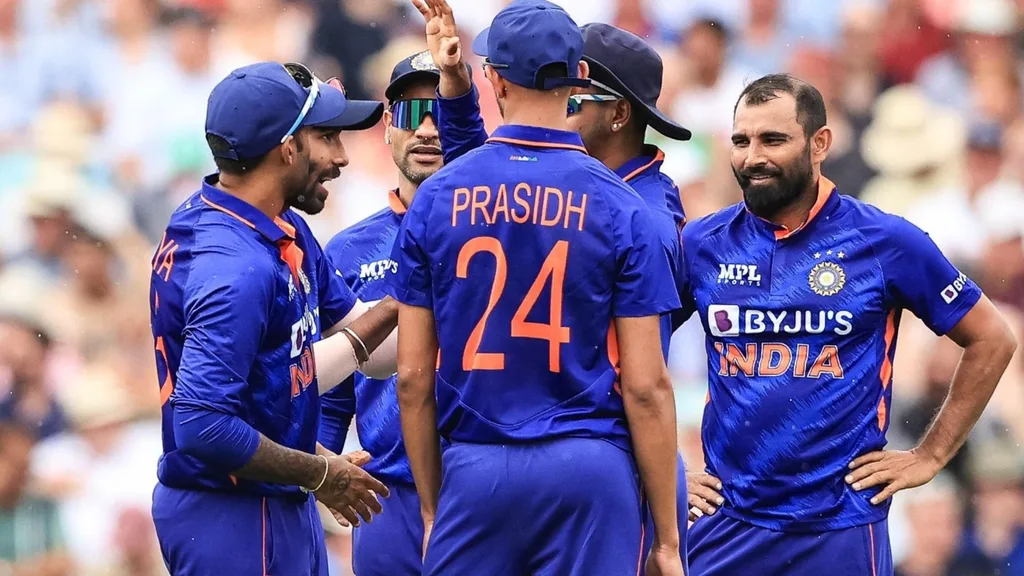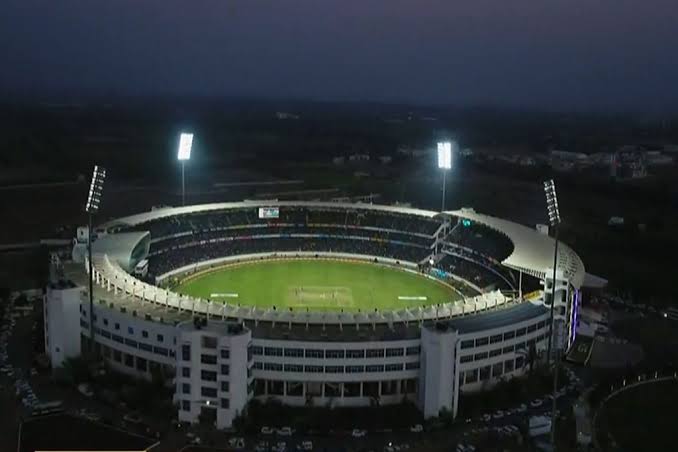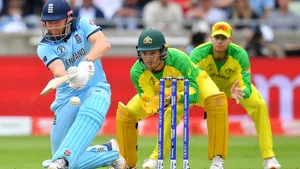TBD In Cricket
Introduction
Cricket, often regarded as a gentleman’s game, is a sport rich in strategy and nuance. Amidst the roar of the crowd and the intensity of competition, there exists a pivotal moment that encapsulates the essence of cricketing strategy – the “To Be Decided” scenario. This enigmatic situation presents captains and players with a myriad of choices, each carrying its own risks and rewards. In this article, we delve into the complexities of decision-making in cricket, exploring the artistry behind the “To Be Decided” moment.
TBD In Cricket: Different Scenarios
Understanding the TBD Scenario:
“To Be Decided” situations in cricket typically arise when the outcome of a match hangs in the balance, and crucial decisions need to be made to tilt the scales in favor of one team. These scenarios can manifest in various forms, including:
- Chasing a Target: In limited-overs formats such as One Day Internationals (ODIs) and Twenty20 (T20) matches, teams often find themselves in TBD situations when they are nearing the target score. The balance between scoring runs and preserving wickets becomes paramount, requiring astute decision-making from batsmen and team management.
- Setting a Target: In Test matches and certain limited-overs encounters, the team batting first faces the challenge of setting a competitive target for their opponents. This involves assessing pitch conditions, weather forecasts, and the strengths of the opposition to devise a strategic plan aimed at maximizing the team’s chances of victory.
- Bowling in the Death Overs: In white-ball cricket, particularly in T20s, the final overs of an innings, colloquially known as the “death overs,” present a TBD scenario for bowlers and captains. The delicate balance between containment and aggression must be maintained to restrict the opposition’s scoring while also taking crucial wickets.
Factors Influencing TBD Decisions

Several factors influence the decision-making process during TBD scenarios in cricket:
- Match Situation: The current state of the game, including the score, number of overs remaining, and condition of the pitch, significantly impacts the decisions made by captains and players.
- Player Form and Skill: The form and skill level of individual players play a crucial role in determining their roles and responsibilities during TBD situations. Captains must assess which players are best equipped to handle pressure and deliver under challenging circumstances.
- Opposition Strengths and Weaknesses: A thorough understanding of the opposition’s strengths and weaknesses enables teams to formulate tailored strategies to exploit potential vulnerabilities and neutralize threats.
- Pitch and Weather Conditions: The condition of the pitch and prevailing weather conditions can have a profound impact on the outcome of a cricket match. Teams must adapt their tactics accordingly, taking into account factors such as spin, swing, and variable bounce.
Different Approaches to TBD Situations:
Navigating through TBD scenarios requires a combination of strategic acumen, tactical awareness, and mental fortitude. Here are some strategic approaches commonly employed by teams:
- Risk Assessment: Captains and coaches must assess the risk-reward ratio associated with various decisions during TBD situations. Calculated risks may need to be taken to seize momentum or break opposition partnerships.
- Rotation of Strike: In batting scenarios, rotating the strike and keeping the scoreboard ticking are essential to building pressure on the opposition and maintaining control of the innings. Batsmen must look for singles and twos while capitalizing on loose deliveries.
- Strategic Field Placements: Captains often deploy strategic field placements to apply pressure on the opposition batsmen and induce mistakes. This may involve setting attacking fields to take wickets or defensive fields to stem the flow of runs.
- Bowling Variations: Bowlers must vary their pace, length, and trajectory to keep batsmen guessing and prevent them from settling into a rhythm. The ability to bowl yorkers, slower balls, and well-disguised variations is particularly crucial in the death overs.
- Mental Resilience: In high-pressure situations, mental resilience and composure can make the difference between success and failure. Players must stay focused, maintain belief in their abilities, and execute their skills with confidence.
“To Be Decided” scenarios in cricket epitomize the essence of the sport, encapsulating the thrill of uncertainty and the challenge of making split-second decisions under pressure. Whether chasing a target, setting one, or defending it, teams must display strategic astuteness, tactical awareness, and mental fortitude to emerge victorious.
History Of TBD In Cricket

Evolution Through the Ages:
As cricket evolved from its amateur origins to a professional sport with global appeal, TBD moments became more frequent and entrenched in the sport’s narrative. The advent of Test cricket in the late 19th century provided fertile ground for the emergence of legendary TBD scenarios that have since become etched in cricketing folklore.
One such iconic moment unfolded during the timeless Test match between South Africa and England at Durban in 1939. With the match delicately poised and the outcome hanging in the balance, South Africa’s Eric Rowan played a match-saving innings of grit and determination, defying England’s formidable bowling attack to secure a draw for his team. Rowan’s heroics not only salvaged a result for South Africa but also showcased the resilience and resolve required to navigate through TBD scenarios at the highest level of the game.
The Rise of Limited-Overs Cricket:
The advent of limited-overs cricket in the latter half of the 20th century introduced a new dimension to TBD moments, characterized by the fast-paced nature of the shorter formats. One-Day Internationals (ODIs) and Twenty20 (T20) cricket revolutionized the sport, ushering in an era of explosive batting, innovative bowling, and nail-biting finishes.
In the inaugural ICC Cricket World Cup final in 1975, the TBD scenario took center stage as the West Indies and Australia battled for supremacy at Lord’s. Chasing a modest target, the West Indies found themselves in a precarious position, with wickets falling at regular intervals. However, a composed innings by Clive Lloyd, punctuated by a breathtaking century, steered the West Indies to victory, showcasing the resilience and determination required to navigate through TBD moments on cricket’s grandest stage.
TBD Moments:
A Test of Character: At its core, TBD moments in cricket serve as a litmus test of character, separating the ordinary from the extraordinary and the champions from the contenders. Whether it’s the nerve-wracking final over of a T20 match or the grueling fifth day of a Test match, TBD scenarios demand courage, composure, and conviction from players and teams alike.
In the 2005 Ashes series, arguably one of the greatest Test series of all time, TBD moments abounded, with both England and Australia producing moments of brilliance under pressure. From Andrew Flintoff’s iconic spell at Edgbaston to Shane Warne’s mesmerizing deliveries at Old Trafford, the series epitomized the drama and intensity of TBD scenarios, captivating audiences and cementing its status as a timeless classic in cricketing history.
TBD In Cricket Famous Moments

The concept of TBD moments in cricket can be traced back to the sport’s earliest origins, rooted in the intrinsic unpredictability of the game. From the rudimentary matches played in the English villages to the grand arenas of modern-day international cricket, TBD scenarios have been an inherent aspect of the sport’s DNA.
One of the earliest documented instances of a TBD moment dates back to the 19th century, during a Test match between England and Australia at The Oval in 1882. In what would later be termed as the “The Ashes,” Australia, chasing a modest target, found themselves in a precarious position, with just a few runs needed to secure victory. However, a stunning bowling performance by England’s Fred Spofforth turned the tide, leading to a dramatic Australian collapse and an improbable English win. This iconic match laid the foundation for the intense rivalry between the two cricketing nations and exemplified the drama inherent in TBD scenarios.
The Tied Test –
- Australia vs. West Indies, Brisbane, 1960: In the annals of cricketing history, few matches hold the distinction of being as dramatic and enthralling as the Tied Test between Australia and the West Indies at Brisbane in 1960.
- With the series delicately poised at 1-1, the stage was set for a thrilling finale. Batting first, Australia posted a formidable total, setting the West Indies a challenging target of 233 runs to win. What ensued was a captivating battle of wills, as the West Indies fought tooth and nail to chase down the target. In a nail-biting climax, the match ended in a tie, with both teams finishing on 232 runs.
- The Tied Test not only showcased the competitive spirit of both sides but also epitomized the drama and uncertainty inherent in TBD moments.
The Miracle of Eden Gardens –
- India vs. Australia, Kolkata, 2001: In what is widely regarded as one of the greatest comebacks in cricketing history, India produced a miraculous turnaround to defeat Australia in the second Test match at Eden Gardens in 2001.
- Trailing by 274 runs after the first innings and facing the prospect of following on, India found themselves in a precarious position. However, a sensational batting performance led by VVS Laxman and Rahul Dravid turned the tide in India’s favor. The duo stitched together a record-breaking partnership of 376 runs, defying the Australian bowling attack and propelling India to an improbable victory.
- The Miracle of Eden Gardens not only showcased the resilience and determination of the Indian team but also exemplified the unpredictability of TBD moments in cricket.
The 1999 World Cup Semi-Final –
- Australia vs. South Africa, Birmingham: In a high-stakes encounter that epitomized the drama and intensity of knockout cricket, Australia clashed with South Africa in the semi-final of the 1999 Cricket World Cup at Edgbaston.
- Chasing a modest target of 214 runs to win, South Africa found themselves in a commanding position, needing just 16 runs off the final four overs with four wickets in hand.
In the rich tapestry of cricket’s history, TBD moments stand out as testaments to the sport’s enduring appeal and timeless drama. From the nerve-wracking climax of tied Tests to the heart-stopping finishes in World Cup semi-finals, these moments encapsulate the essence of uncertainty and unpredictability that make cricket the beloved sport it is today.




